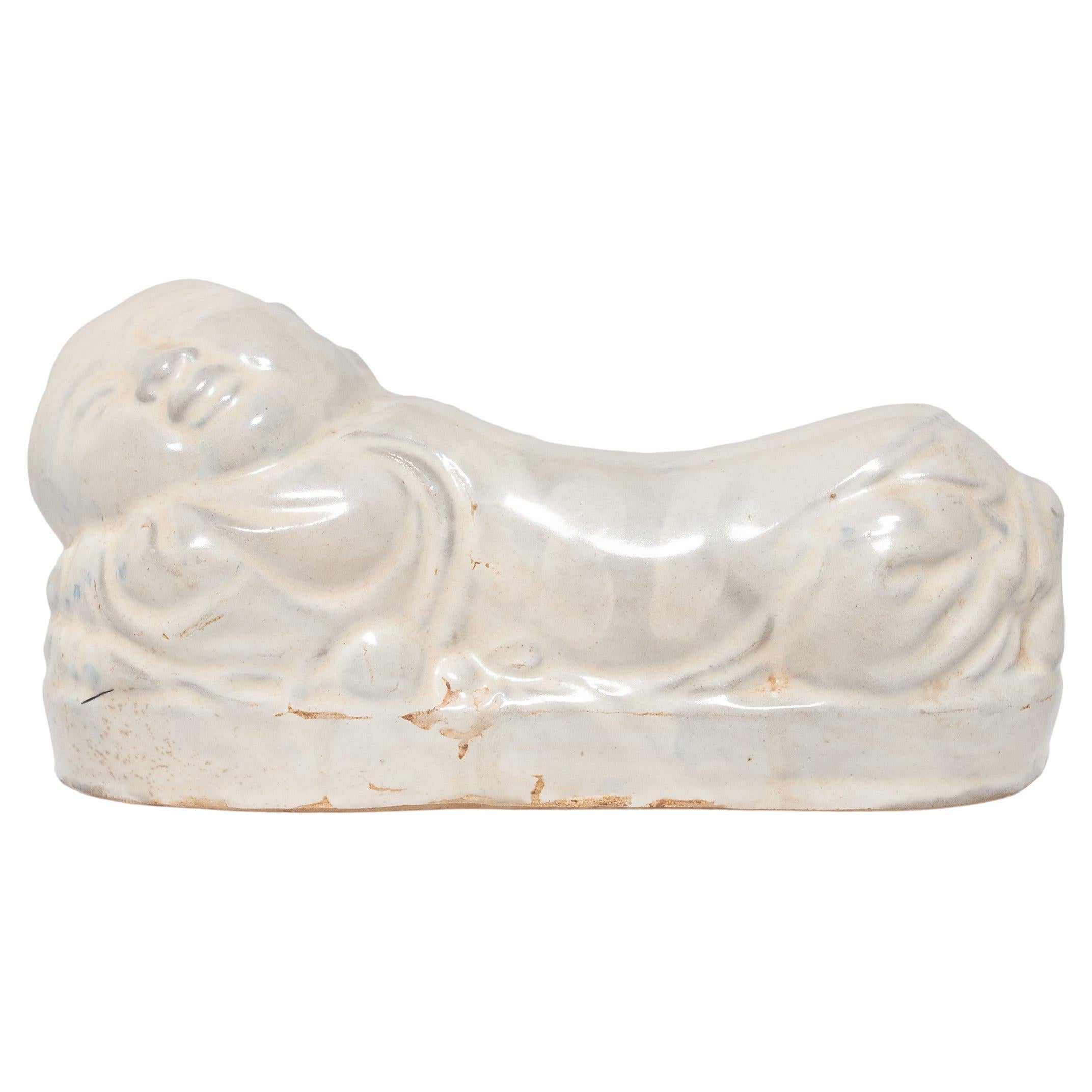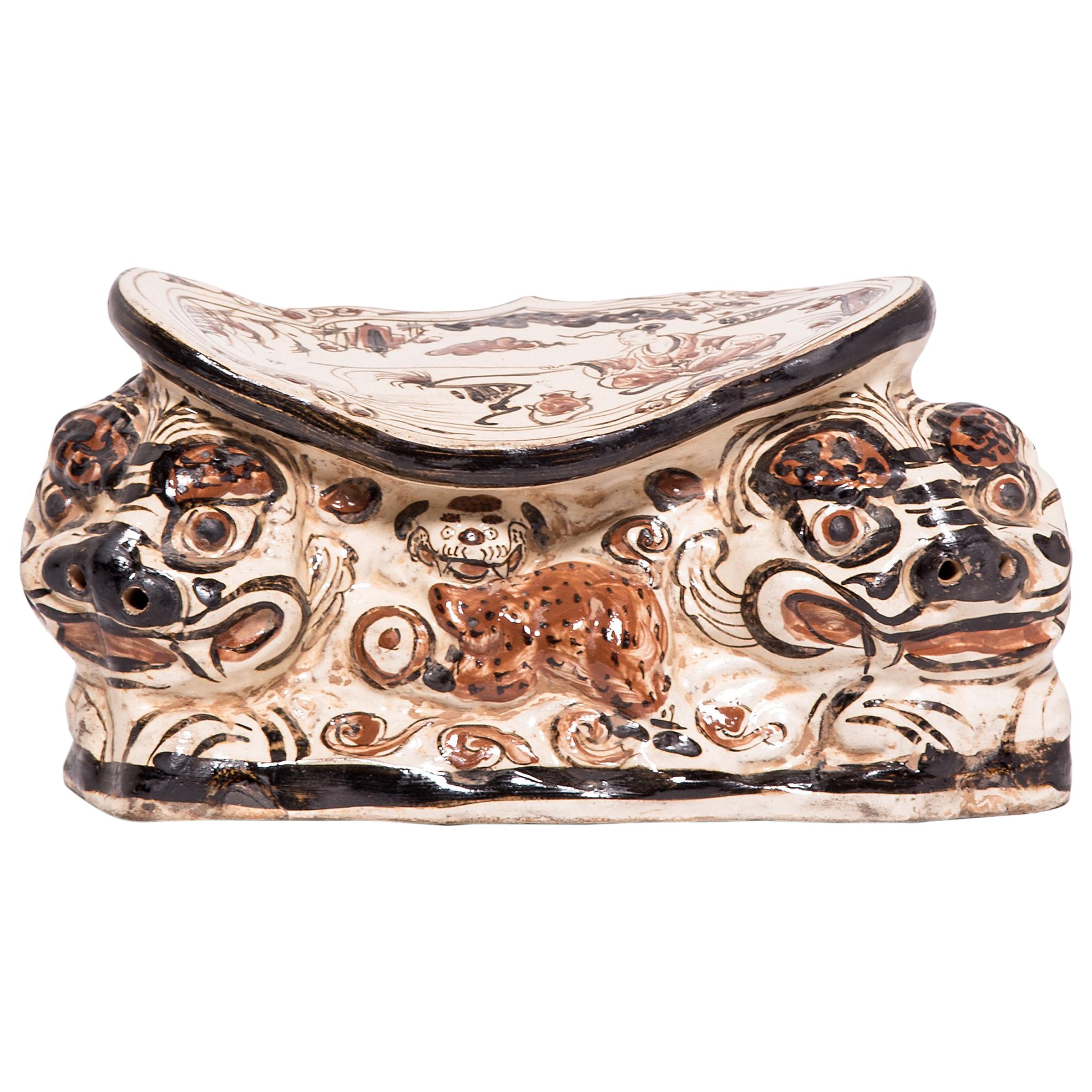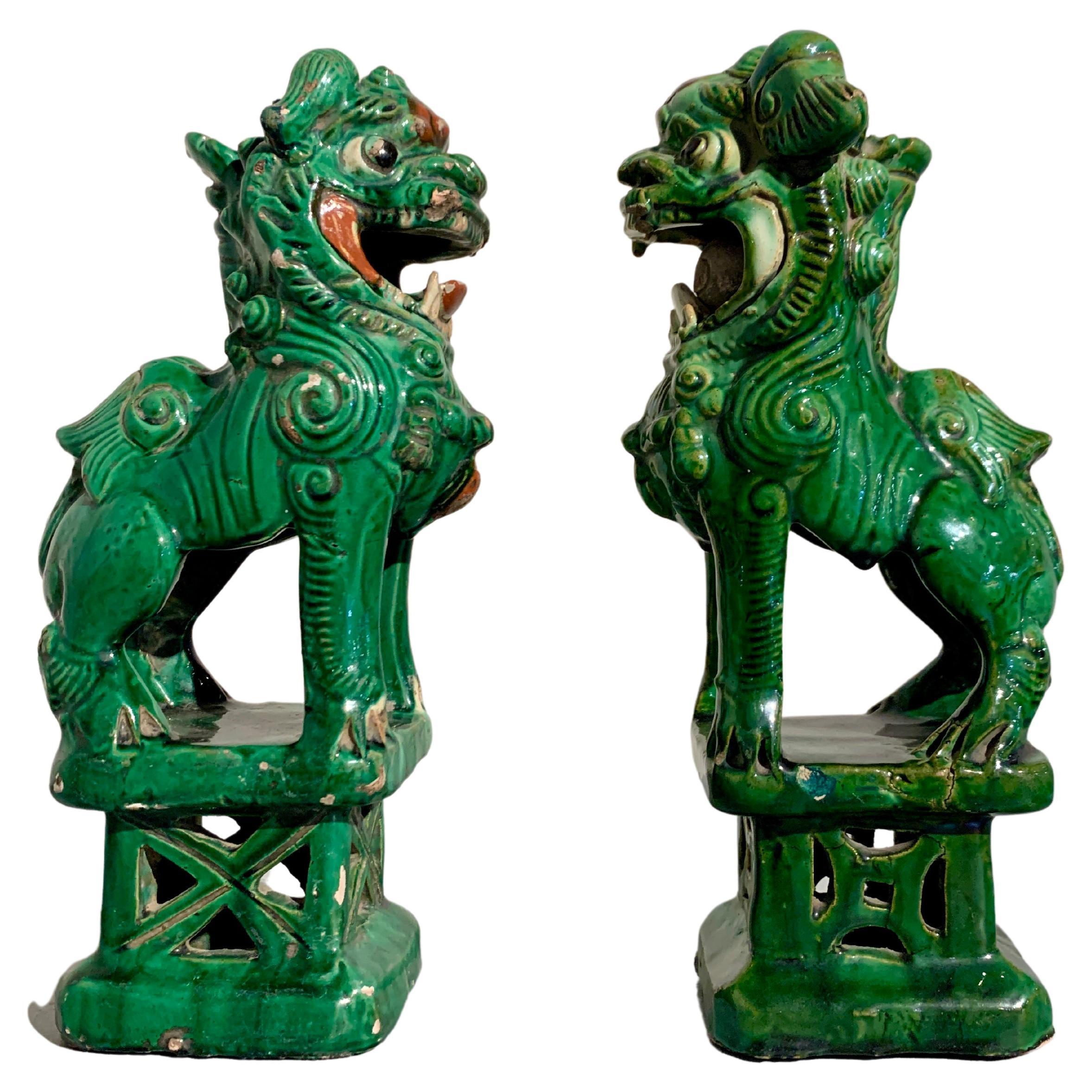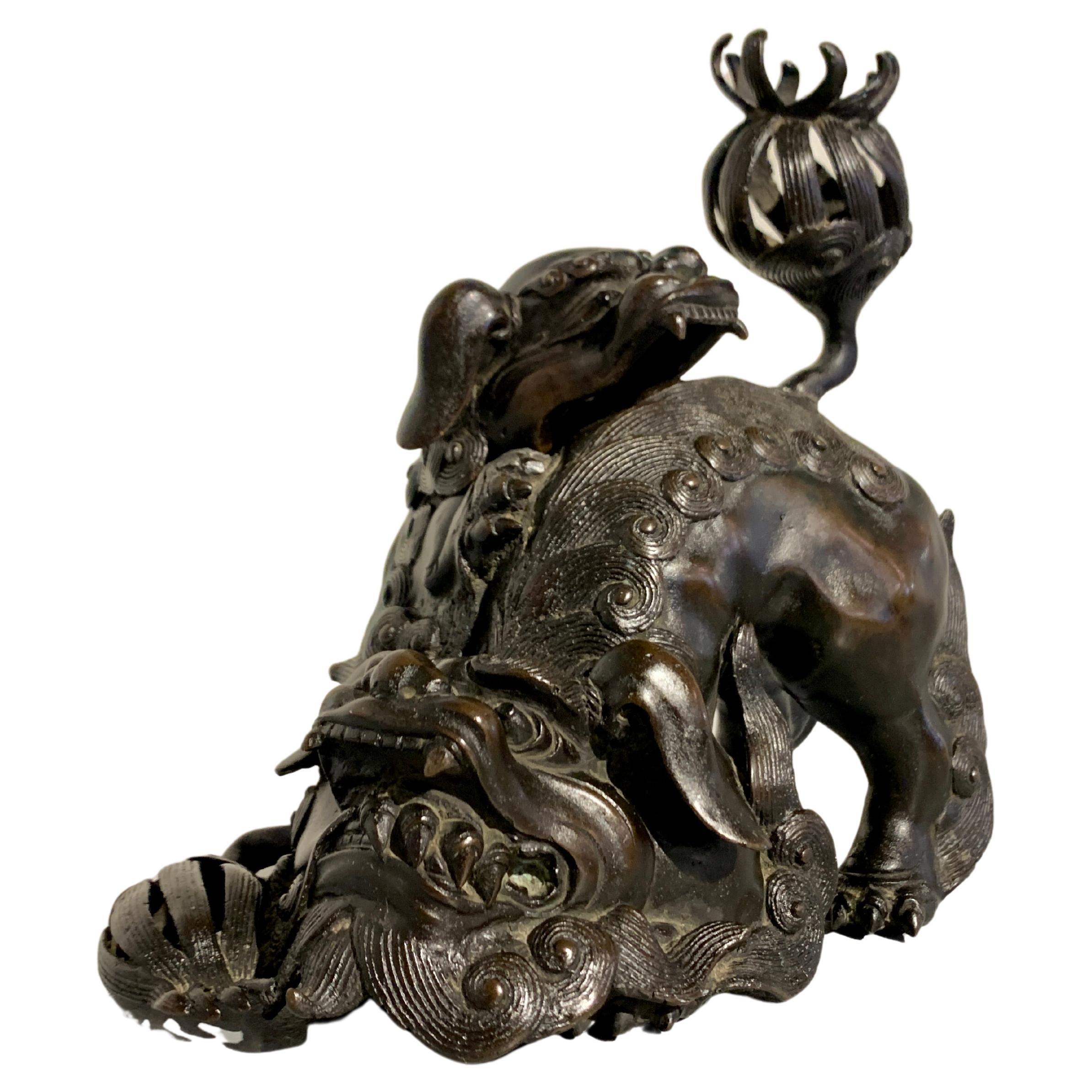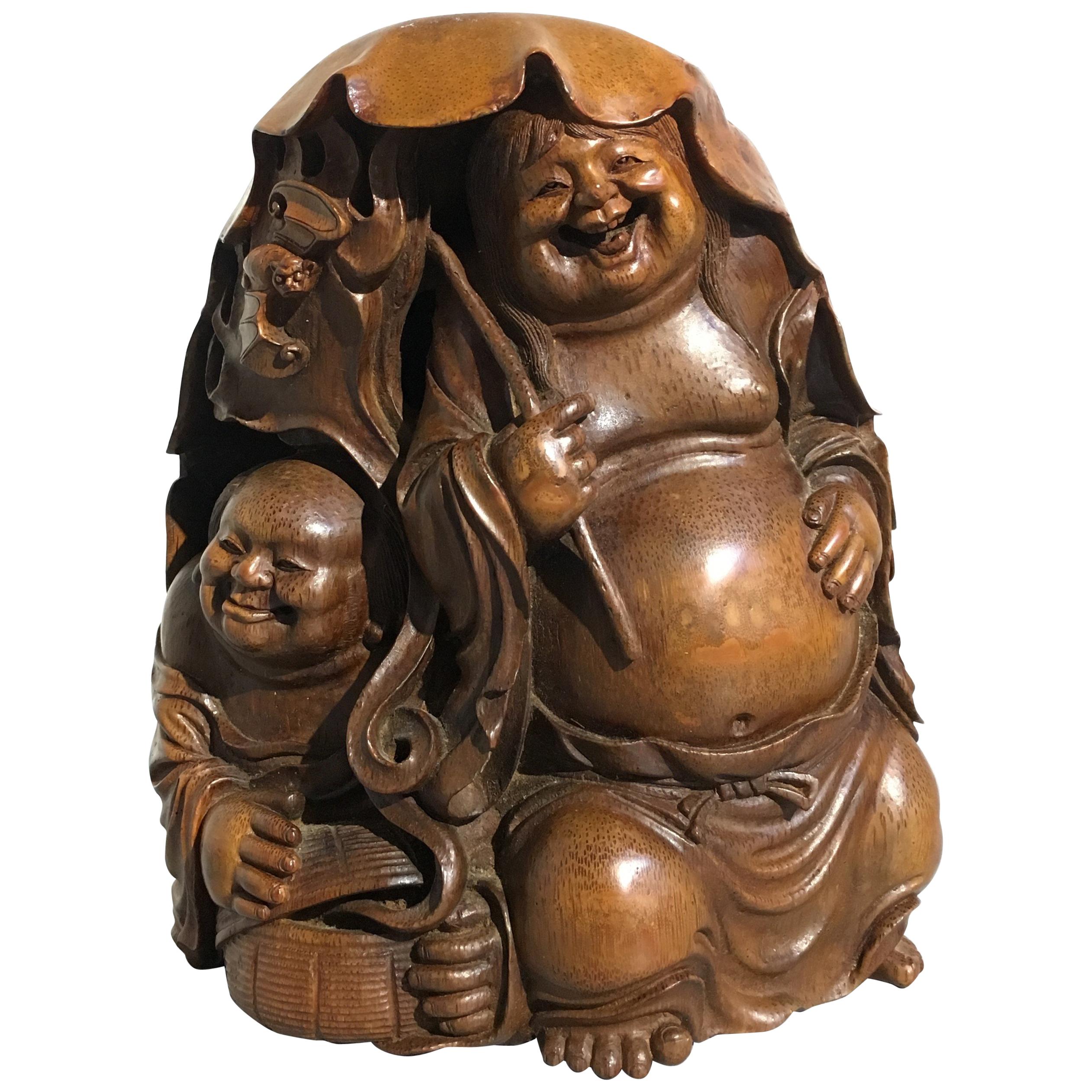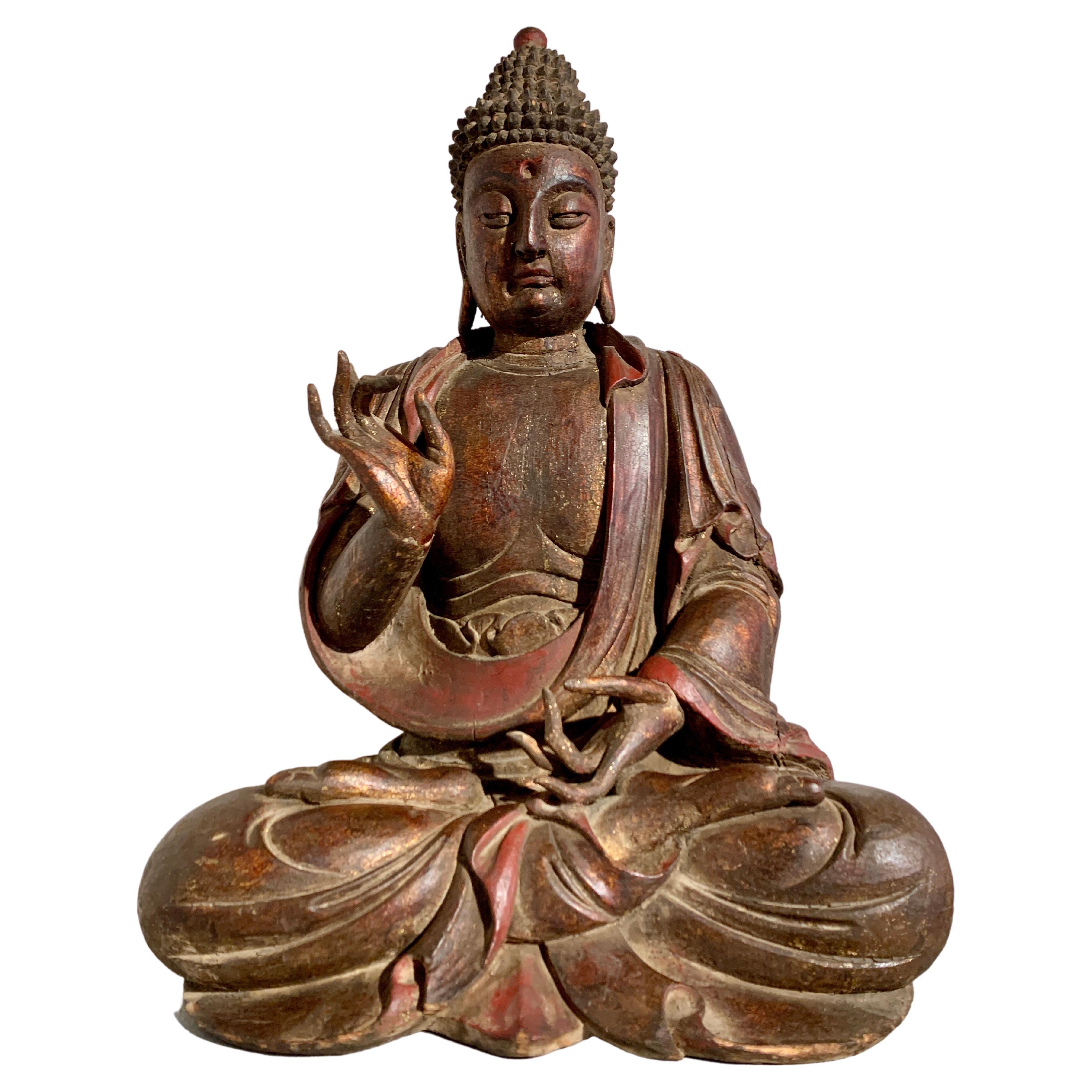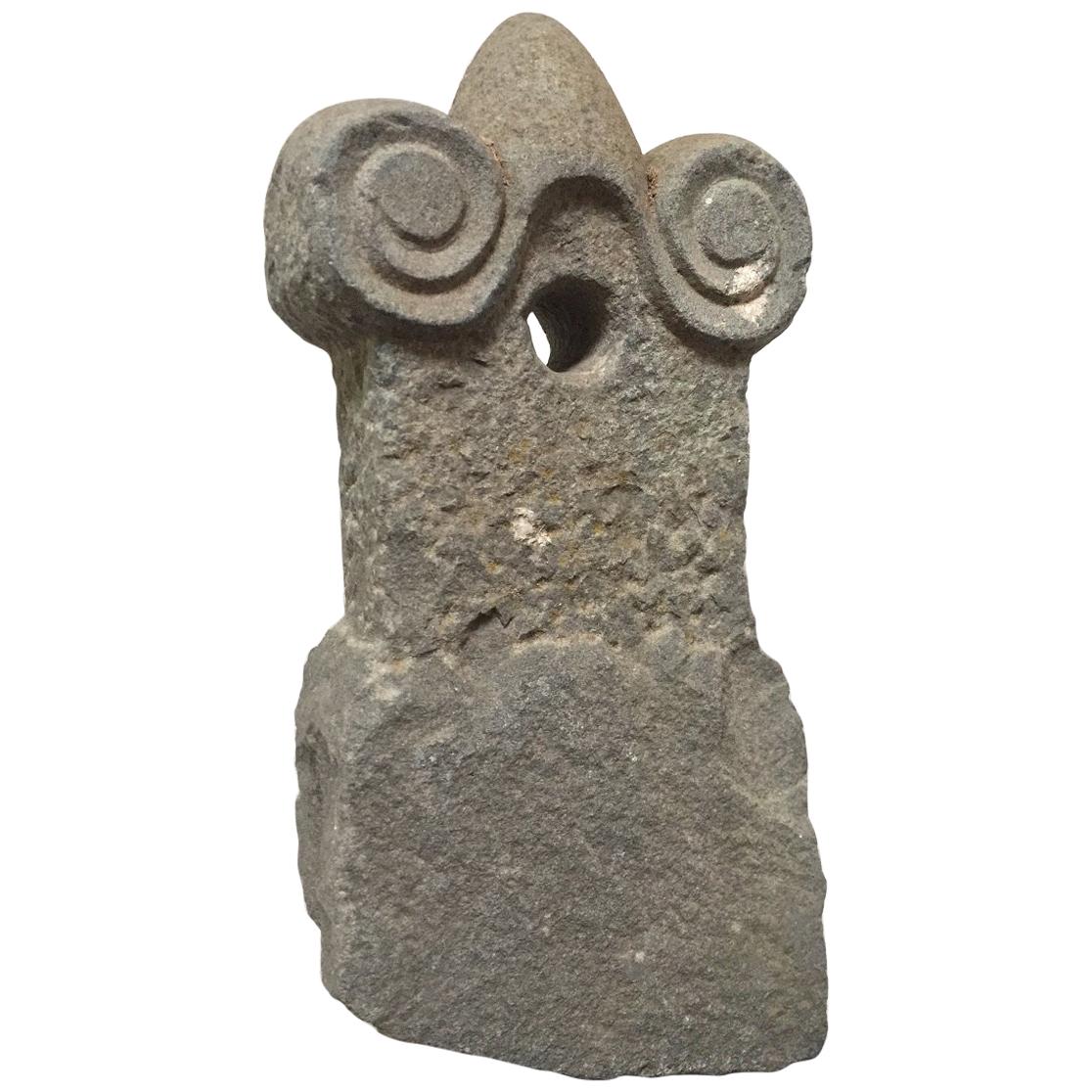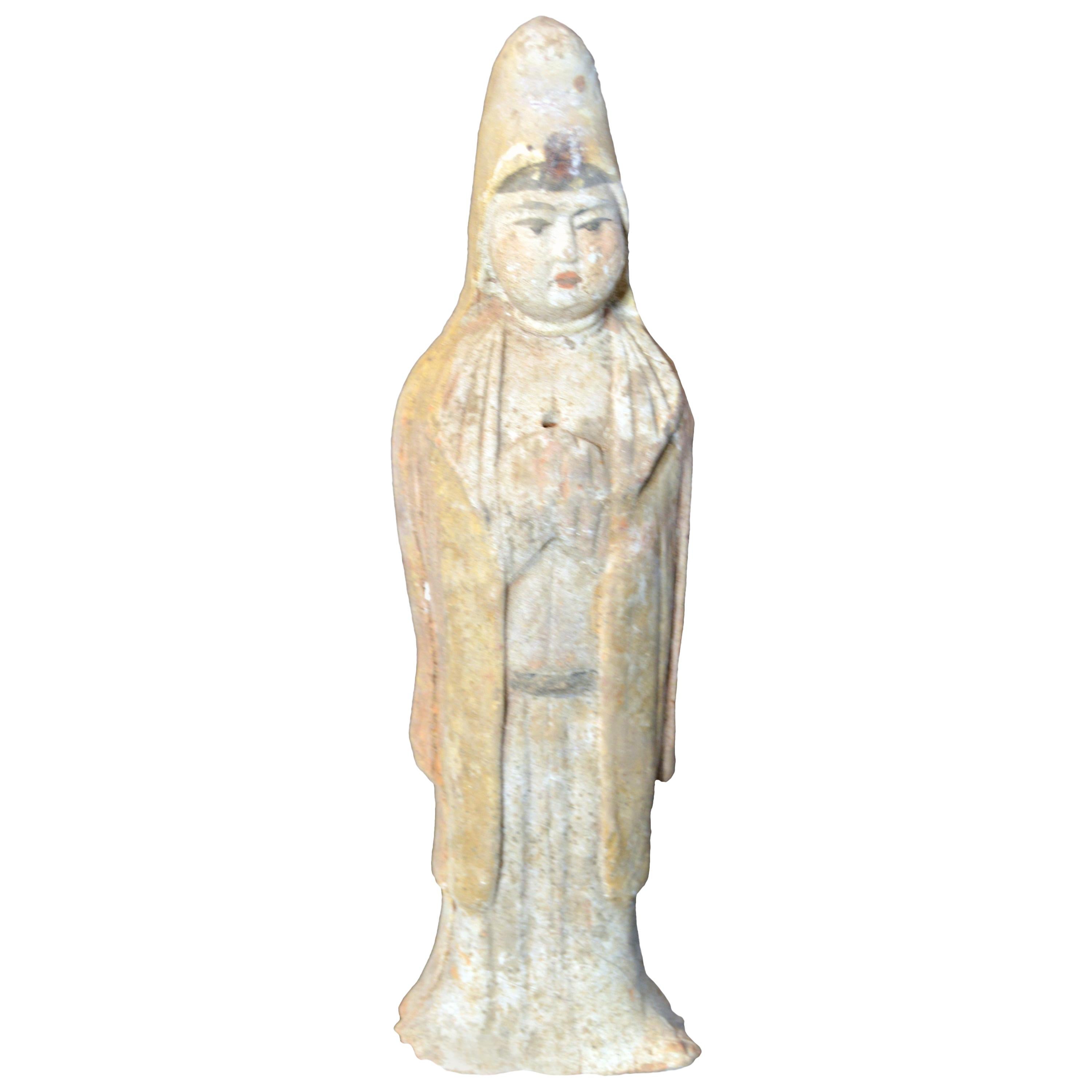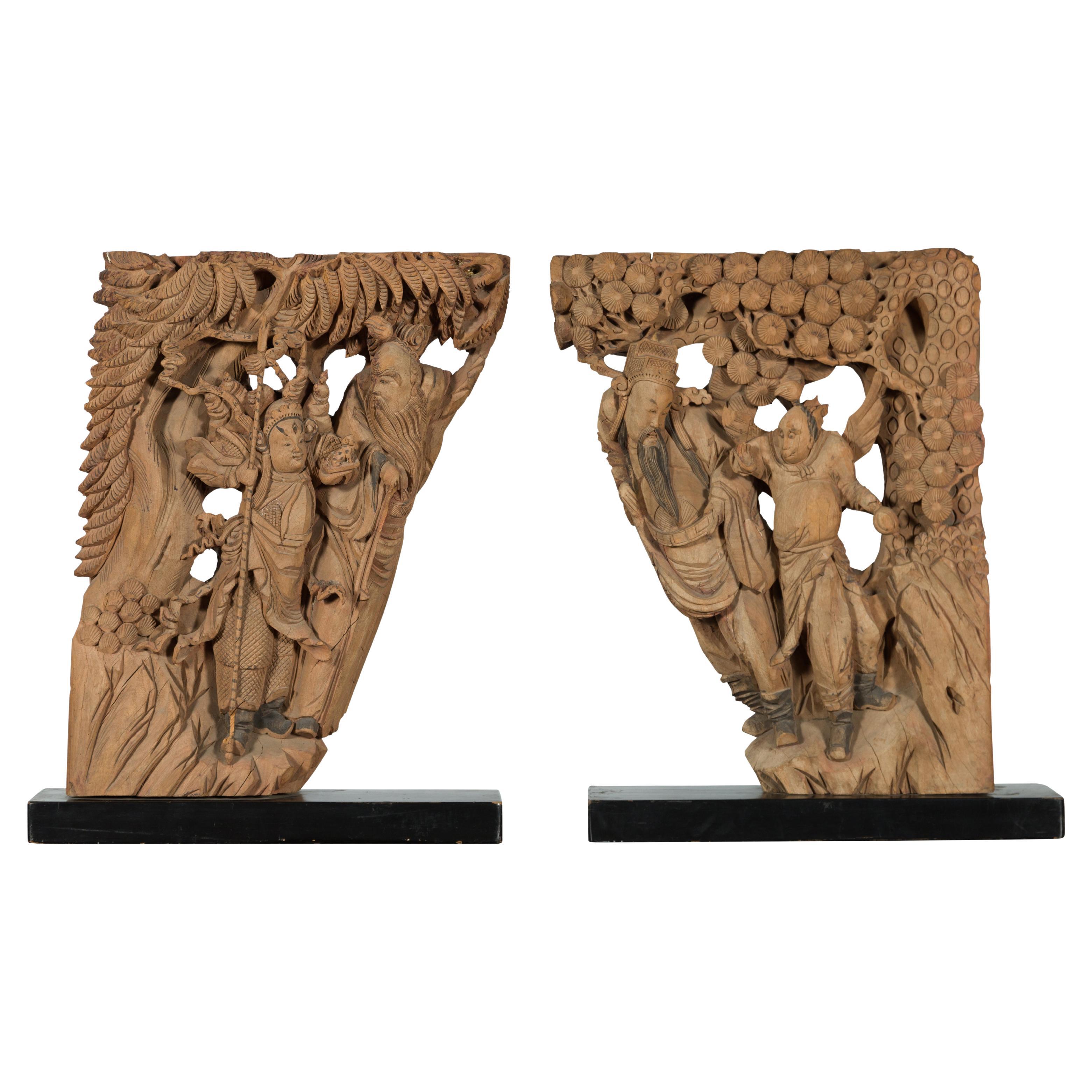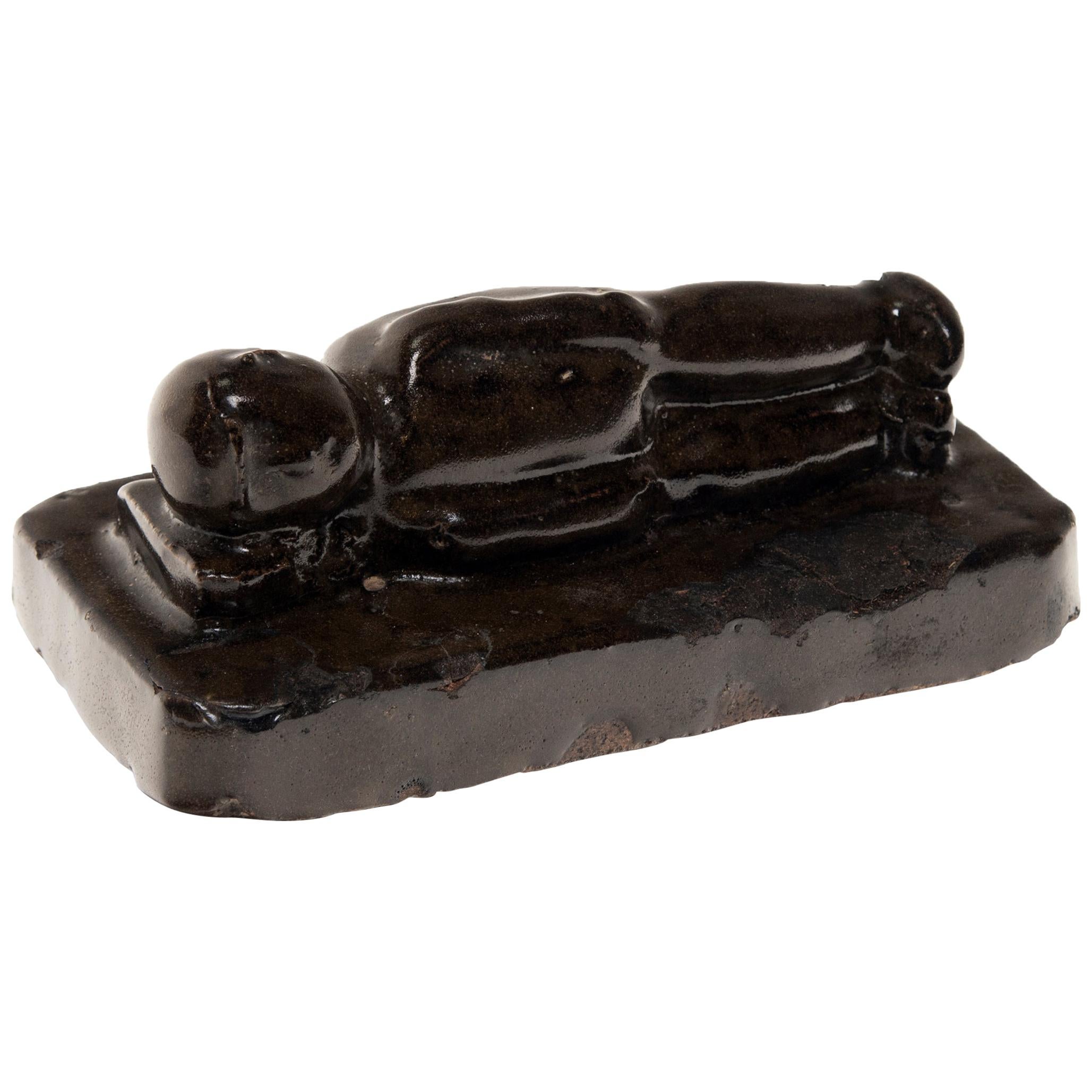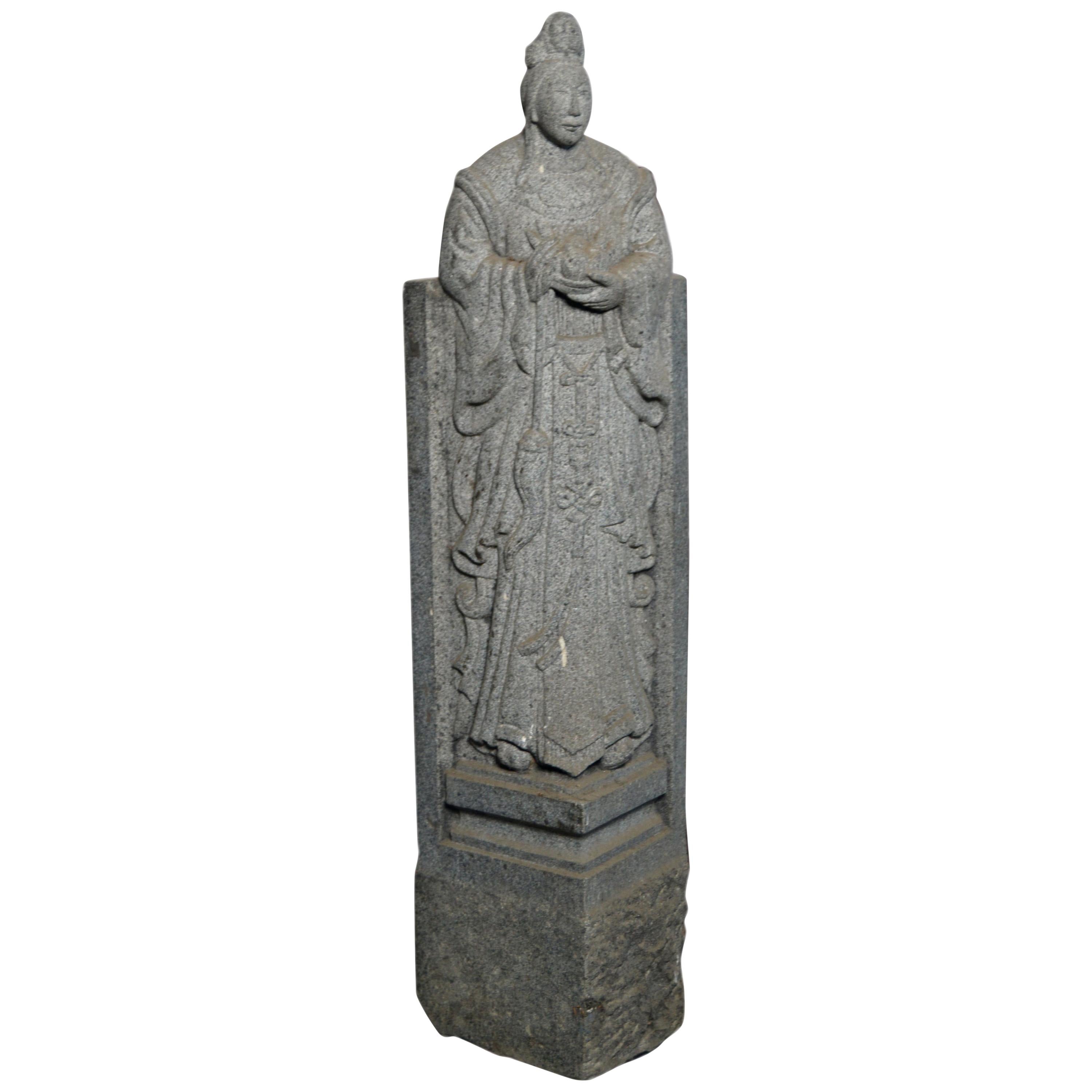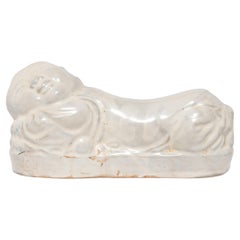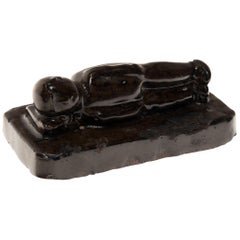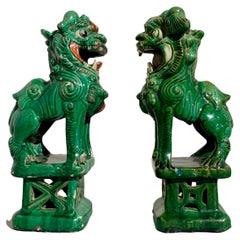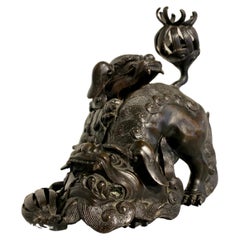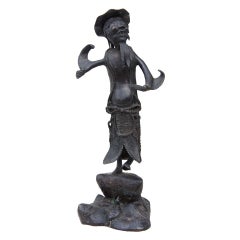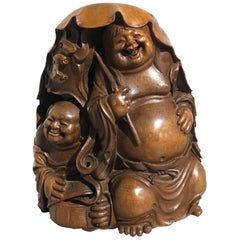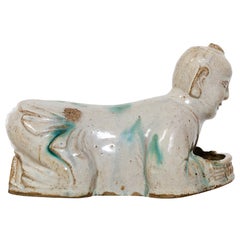
19th Century Chinese Ho Ho Boy Headrest
View Similar Items
Want more images or videos?
Request additional images or videos from the seller
1 of 7
19th Century Chinese Ho Ho Boy Headrest
About the Item
- Dimensions:Height: 6.25 in (15.88 cm)Width: 9.75 in (24.77 cm)Depth: 7 in (17.78 cm)
- Style:Qing (Of the Period)
- Materials and Techniques:Ceramic,Glazed
- Place of Origin:
- Period:
- Date of Manufacture:circa 1850
- Condition:Wear consistent with age and use.
- Seller Location:Chicago, IL
- Reference Number:Seller: CCDB0131stDibs: LU820015239371
About the Seller
5.0
Platinum Seller
Premium sellers with a 4.7+ rating and 24-hour response times
Established in 1997
1stDibs seller since 2006
1,672 sales on 1stDibs
Typical response time: 1 hour
Authenticity Guarantee
In the unlikely event there’s an issue with an item’s authenticity, contact us within 1 year for a full refund. DetailsMoney-Back Guarantee
If your item is not as described, is damaged in transit, or does not arrive, contact us within 7 days for a full refund. Details24-Hour Cancellation
You have a 24-hour grace period in which to reconsider your purchase, with no questions asked.Vetted Professional Sellers
Our world-class sellers must adhere to strict standards for service and quality, maintaining the integrity of our listings.Price-Match Guarantee
If you find that a seller listed the same item for a lower price elsewhere, we’ll match it.Trusted Global Delivery
Our best-in-class carrier network provides specialized shipping options worldwide, including custom delivery.More From This Seller
View AllChinese Ho Ho Boy Headrest, c. 1900
Located in Chicago, IL
To keep her elaborate hairstyle intact while sleeping, a well-to-do Qing-dynasty woman once used this ceramic headrest as a pillow. This headrest is shaped in the form of a baby boy,...
Category
Early 20th Century Chinese Qing Ceramics
Materials
Ceramic
Chinese Double Guardian Headrest, circa 1900
Located in Chicago, IL
To keep her elaborate hairstyle intact while sleeping, a well-to-do Qing-dynasty woman would use a rigid headrest or neck pillow to keep her head elevated. Whether functional or pure...
Category
Antique Late 19th Century Chinese Qing Animal Sculptures
Materials
Porcelain
Reclining Ho Ho Boy Charm Weight, c. 1850
Located in Chicago, IL
This 19th century weight originally used its heft domestically to protect a child. A simple yet ingenious concept, the stone anchored the baby’s swaddling cloth to the bed so the chi...
Category
Antique Mid-19th Century Chinese Qing Sculptures and Carvings
Materials
Ceramic
Pair of 19th Century Chinese Stone Fu Lion Guardians
Located in Chicago, IL
This pair of 19th century carved limestone Fu dogs with sinister smiles and furled brows once guarded the entrance to one of provincial China's grand homes. One peers up and the othe...
Category
Antique Mid-19th Century Chinese Qing Sculptures and Carvings
Materials
Limestone
Chinese Bamboo Cloth Teapot, c. 1900
Located in Chicago, IL
Tea drinking has been an integral part of Chinese culture for centuries, resulting in a wide range of social customs and material traditions. In addition to tea leaves, water, and heat, the art of drinking tea (chayi) calls for a variety of teaware and utensils - both practical and decorative.
This charming teapot dates to the late Qing dynasty and is hand-carved from a hollow length of bamboo to appear as though parceled by a cloth strung with tassels. The teapot has a squat, rounded form and a dark brown finish, reminiscent of Yixing red clay teapots...
Category
Early 20th Century Chinese Qing Sculptures and Carvings
Materials
Bamboo
Chinese Bamboo Pomegranate Teapot, c. 1900
Located in Chicago, IL
Tea drinking has been an integral part of Chinese culture for centuries, resulting in a wide range of social customs and material traditions. In addition to tea leaves, water, and heat, the art of drinking tea (chayi) calls for a variety of teaware and utensils - both practical and decorative.
This charming teapot dates to the late Qing dynasty and is hand-carved from a hollow length of bamboo in the shape of a ripe pomegranate. The handle is carved to resemble a thin branch, which forks to either side of the teapot bearing long, slender leaves. The teapot has a squat, rounded form and a dark brown finish, reminiscent of Yixing red clay teapots...
Category
Early 20th Century Chinese Qing Sculptures and Carvings
Materials
Bamboo
You May Also Like
Chinese Green Glazed Foo Lions, Near Pair, Late 19th Century, China
Located in Austin, TX
A charming near pair of Chinese green glazed foo lion joss stick holders, late 19th century, China.
The delightful foo lions, also referred to as foo dogs, crafted as joss (incens...
Category
Antique Late 19th Century Chinese Qing Sculptures and Carvings
Materials
Stoneware
Chinese Bronze Fighting Foo Lions Censer, Qing Dynasty, Late 19th Century, China
Located in Austin, TX
A fantastic Chinese cast bronze censer in the form of two Buddhistic lions play fighting, late Qing Dynasty, late 19th century, China.
The censer formed as a pair of Buddhistic li...
Category
Antique Early 1900s Chinese Qing Sculptures and Carvings
Materials
Bronze
19th Century Chinese Bronze Dancing Figure
Located in Hudson, NY
The charming figure done completely in the lost wax method is in a primitive naive style. The male figure is dancing excitedly on a rocky outcrop. His costume of a loose-fitting coat with long flared sleeves flying in space as he dances reveals his large potbelly while his loose-fitting shift girdled at the waist with a large belt flips up to show his legs and bare feet as he dances. The figure is suspended on one leg as he moves and his face is animated and happy. The head is cast separately so that his wild hair and beard are free from the body castings...
Category
Antique 19th Century Chinese Sculptures
Materials
Bronze
Chinese Qing Dynasty Carved Bamboo HeHe ErXian Group, 19th Century
Located in Austin, TX
A wonderful Chinese bamboo figural carving featuring the Taoist immortal twins of eternal youth, known as the HeHe ErXian, Qing dynasty, 19th century.
F...
Category
Antique 19th Century Chinese Qing Sculptures and Carvings
Materials
Bamboo
Large Chinese Carved and Lacquered Buddha, Qing Dynasty, 19th Century
Located in Austin, TX
A large and magnificent near life-sized Chinese carved and lacquered wood figure of a Buddha, Qing Dynasty, 19th century or earlier, southern China.
The figure likely represents one of the Five Tathagatas, also known as Dhyani Buddhas or Wisdom Buddhas. More specifically, either Amitabha or Amoghasiddhi. Amitabha is the Buddha of infinite light, and represents the wisdom of observation and recognition. Amoghasiddhi is the Buddha of accomplishment, and represents the wisdom of perfected practices. The size and scale of the Buddha indicates it was made for temple worship.
The large Buddha is portrayed seated in vajrasana, or full lotus position, with the soles of both feet facing up. His elegant hands, with impossibly long and slender fingers, perform shuni mudra, the gesture of bestowing patience. His right arm is bent at the elbow, the right hand raised to heart level. The left arm resting gently in his lap, the left hand at navel level.
The Buddha is dressed in voluminous robes that wrap around his shoulders and body, and tied at the waist. The heavy fabric draping and pooling elegantly all around his robust body. His broad chest and right arm exposed.
The Buddha's face is both solemn and beatific - his expression seeming to change depending on the angle of view. The most notable feature of his face is the large urna to the center of his forehead, set between a pair of painted, high arching brows over heavily lidded almond shaped eyes. A strong nose is set above a small mouth pursed in an ever so slight smile. Long pendulous earlobes touch his shoulders.
The Buddha's hair arranged in the typical fashion, with "spikes" representing tight curls. A prominent ushnisha rises from the crown of his head, covered by more hair, and topped with a rounded protuberance.
The Buddha is constructed from several blocks of wood, joined, carved and lacquered a deep red-brown with gold flecks...
Category
Antique 19th Century Chinese Qing Sculptures and Carvings
Materials
Wood
19th Century Chinese Stone Horse Hitching Post
Located in Vosselaar, BE
This double sided hitching post was used to stall horses for short period of times. They are found throughout China and made during centuries. This hardstone example dates from the 1...
Category
Antique Early 19th Century Chinese Sculptures and Carvings
Materials
Stone
Recently Viewed
View AllMore Ways To Browse
Chinese Headrest
Antique Chinese Headrest
Antique and Tribal Headrests
Qing Dynasty Pillow
Chinese Pillow Headrest
Headrest Ceramic
Japanese Wood Carving
Antique Carved Jade
Indian Antique Wood Furniture
Burmese Wood Carving
Japan Doll
Temple Panel
China Lantern
Chinese Carved Relief
Gilded Statue
Chinese Antique Jade
Asian Wood Head
Buddha Statues Gold
